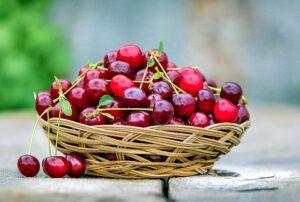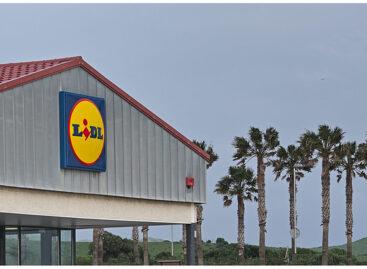The situation of the EU cherry and fruit industry in the 2024/25 business year
Stone fruit producers are concerned about the burdens imposed on them by the European Union’s phytosanitary, environmental protection and packaging regulations, which greatly affect production costs. Stone fruit production is increasingly affected by changing climatic conditions. Farmers are looking for varieties that have less cold hour requirements and are suitable for warmer regions or early varieties as they potentially offer better income opportunities. For growers, the issue of labor remains a significant problem during harvest.

(Photo: Pixabay)
In the EU, the area of cherry and cherry orchards is slowly decreasing, as old orchards are not renewed. Growers blame the lack of disease-resistant varieties as well as high production costs, including but not limited to labor costs. Total EU cherry and sour cherry production in the 2024/25 marketing year is forecast to rise only slightly from last year’s low level to 715,000 tonnes compared to 705,000 tonnes in 2023.
In Poland, the mild winter allowed the fruit trees to remain in good condition, the tree roots were not damaged by frost
The favorable weather conditions in January and February also contributed to the good condition of the plants. In the spring, vegetation started two to three weeks earlier than usual. However, the condition of the fruit trees deteriorated due to the frosts at the end of April and the first half of May. The frosts caused considerable damage to the flower buds. Hail also caused damage in some areas in the second half of May. Thus, according to forecasts, the cherry and sour cherry harvest in Poland for the 2024/25 business year will fall short of last year. In Italy, the harvest is forecast to be significantly lower than last season, as unfavorable weather conditions, consisting of cold nights and hot days, negatively affected flowering in April. According to official estimates, Spanish production overall is expected to recover from the low volumes recorded last season. Despite mild temperatures in the main growing regions, which in some cases did not correspond to the number of cold hours favorable to the trees. Similarly, rainfall and mild temperatures also delayed fruit ripening and harvest. Especially in the case of early varieties, where precipitation led to cracking of the fruits. Production in Greece is forecast to remain stable compared to last season’s levels.
In Hungary, the vegetative development of the trees started three weeks earlier due to the mild winter and early spring
In the middle of March, cold spells appeared in some parts of the country, which caused frost damage in some orchards and negatively affected productivity. During the flowering period, the weather was unusually warm with low relative humidity. Despite the sufficient activity of the pollinators, the buds dried up quickly, which hindered fertilization and reduced the yield prospects. The flowering was followed by another cold and overcast period for about four weeks, which threatened fruit setting. On a positive note, the rains had a positive effect on fruit size. Overall, the harvest in the 2024/25 economic year is expected to slightly exceed the results of the 2023/24 vintage.
Weather conditions in Bulgaria were favorable for crop development
The mild winter weather until mid-March, although drier than usual, was good for the orchards. The first half of April was unusually warm and dry, which allowed for good flowering and pollination. From the middle of April, cooler than usual temperatures and frequent rains in the country improved the soil moisture conditions, thus having a favorable effect on the development of the fruits. In June, the average temperature rose and rainfall became less frequent, which provided good harvesting conditions for stone fruit. Compared to the previous season, the quality has improved: the average size of the fruits is larger and significant cracks are not expected. Therefore, most of this year’s harvest is intended for fresh consumption.
According to the June 2024 crop estimates by the German Federal Statistical Office, the cherry and sour cherry harvest of the 2024/25 business year is expected to slightly exceed the low harvest of the previous year
The only slight improvement in the production level is largely due to the unfavorable weather conditions at the time of pollination. Late spring frosts particularly reduced yields in eastern Germany, where some areas reportedly lost up to 90% of the crop to frost. In addition, the rainy and cold weather in the north reduced the activity of bees during the pollination of the late varieties. The actual harvested crop may be significantly lower due to thunderstorms with heavy rain and hail in late June and early July. In France, the volume of the crop is expected to remain stable compared to the level of the 2023/24 vintage and to exceed the five-year average. Rains and local hail in May damaged the early varieties in Provence. In other regions, wet weather increased insect damage, especially Drosophila suzukii. In Portugal, unfavorable weather conditions: hail, frost, wind and high temperature fluctuations hindered flowering and fruit setting, so the expected yield is reduced for the second year in a row. In addition, unusually low temperatures in May combined with excessive rainfall resulted in fruit cracking in the final stage of ripening. Early varieties are relatively more affected than late varieties.
Consumption
EU cherry and sour cherry consumption in the 2024/25 marketing year, including the crop for processing, is expected to increase, given the high domestic availability and the good pace of imports in the northern hemisphere at the start of the season. The southern member states of the EU (Spain, Italy, Greece, Portugal and France) are, together with Germany, the biggest consumers of fresh cherries in the EU. Cherries grown mainly in the northern producing EU member states, such as Poland, are used in the processing industry mainly as frozen fruit, juice concentrates, and for the production of jams and jams. The EU is a net importer of cherries, Turkey accounts for nearly 70% of EU imports. Other important suppliers are Serbia, as well as Chile and Argentina in the off-season. In the 2024/25 financial year, EU exports are forecast to return to average levels, after reaching a low point in the 2023/24 financial year, with little drought-related due to crop. The main non-EU destination countries for cherries are the United Kingdom, Switzerland, Russia and Ukraine.
NAV/fas.usda.gov
Related news
Bird flu reappears in Csongrád-Csanád County
🎧 Hallgasd a cikket: Lejátszás Szünet Folytatás Leállítás Nyelv: Auto…
Read more >Farmers help shelters
🎧 Hallgasd a cikket: Lejátszás Szünet Folytatás Leállítás Nyelv: Auto…
Read more >AM: the Ministry of Agriculture is helping dairy farmers with another tender
🎧 Hallgasd a cikket: Lejátszás Szünet Folytatás Leállítás Nyelv: Auto…
Read more >Related news
New HR assistant helps K&H employees
🎧 Hallgasd a cikket: Lejátszás Szünet Folytatás Leállítás Nyelv: Auto…
Read more >Lidl To Invest €600m In Spain, Targets 300 Stores In Portugal
🎧 Hallgasd a cikket: Lejátszás Szünet Folytatás Leállítás Nyelv: Auto…
Read more >KSH: industrial producer prices in November 2025 were on average 2.7 percent lower than a year earlier and 0.3 percent lower than the previous month’s prices
🎧 Hallgasd a cikket: Lejátszás Szünet Folytatás Leállítás Nyelv: Auto…
Read more >







